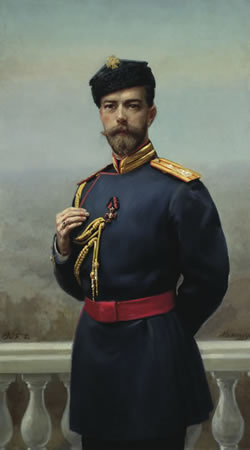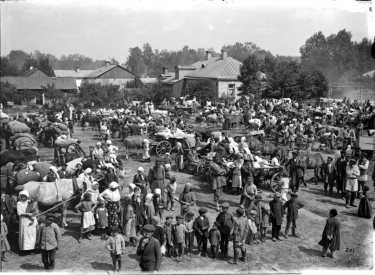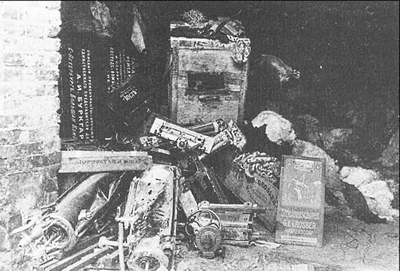![]()
![]()
The German settlements in the Black Sea Region1
(part 3 of 3)
The Liquidation Laws

Nicholas II
The highlight of this campaign was the adoption of the Liquidation Laws by Tsar Nicholas II, without Parliamentary approval, from February 2 and from December 13, 1915.
According to these orders, all subjects with Austrian, Hungarian and German ancestry, living within a strip of land 150 km wide along the western border, and 100 km along the Sea of Azov, the Baltic-, the Black-, and the Caspian Seas would have their property confiscated and then be deported to Siberia. Only those people who were of the Slavic Orthodox faith or nationality and people, who served as officers or volunteers in the army, and their relatives were exempted from this degree.
For the time being excluded from this measure were the “Kronsland” (Crown’s land), the land given by the Russian crown to the colonists during their settlement.
On the basis of this law, approximately 60% of the German population of Volhynia was deported (about 120,000 people) to Siberia by the summer of 1915.

Germans of Volhynia during deportation
As everywhere else during the ensuing war years, ‘The sword of Damocles’ was hanging over the Bessarabian Germans. Every day they waited anxiously for the command to arrive for transport. The most important pieces of clothing and nonperishable food stood packed at the ready, because they knew that they would have little time to evacuate after the arrival of the expulsion order.
The fact that the expulsion order for the Bessarabian Germans never came, was due to the severe winter, and in 1917 the February Revolution broke out in Russia. However, that did not mean that things were rosy and that times were peaceful. The situation in Russia was extremely tense and escalated more and more. The situation in Russia was at a breaking point and increasingly deteriorated day by day. The liquidation of the colonists combined with the lack of supplies and the lack of reforms in Russia fueled a growing sentiment against the tsardom. Every day there were mass protests, demonstrations, hunger marches and strikes. Russia was becoming a powder keg, and the moment for an open revolt had arrived.

May 1915: after the pogrom
The anti-German policy led, in 1915 (27 to 29 May 1915) to a pogrom against the German population in several Russian cities.
In Moscow, 759 shops and houses were destroyed and looted, 40 Germans were wounded and 3 killed.
1 Thanks to S. Winkler for help with the English translation of this page




